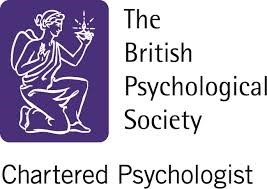Sexual Diversity and Sexual Offending
Introducing an exciting and innovative edited text that helps health practitioners understand the contemporary ubiquitous presentations of sexual diversity that now occur within a therapeutic consultation. Internet cybersex has enabled individuals to be more open and explorative in their sexual repertoire than ever before, so therapists often find themselves working with clients presenting with issues of sexual diversity and sexual offending, sometimes with the latter being confused as being synonymous with the former.
Sexual Diversity and Sexual Offending.
Research, Assessment and Clinical Treatment in Psychosexual Therapy.
Edited by Glyn Hudson-Allez, Karnac ISBN 9781782200116:
Introducing an exciting and innovative edited text that helps health practitioners understand the contemporary ubiquitous presentations of sexual diversity that now occur within a therapeutic consultation. Internet cybersex has enabled individuals to be more open and explorative in their sexual repertoire than ever before, so therapists often find themselves working with clients presenting with issues of sexual diversity and sexual offending, sometimes with the latter being confused as being synonymous with the former. This book proposes to give researchers and clinicians the opportunity to explore aspects of sexual diversity with which they may be unfamiliar, for the reader to have confidence in understanding the issues being addressed and to know when the client may be crossing a line into illegal sexual behaviour. In doing so, the method of therapy offered can be more appropriate for the diverse lifestyles encountered in contemporary society.
The book has 16 chapters, and is divided into three sections: Walking the line, Pushing the line, and Crossing the line; 'the line' essentially being social or legal mores, and how people's sexual practices can get them into difficulties, hence the need for a therapist at all. Part 1 normalises diversity issues as being more than just LGBT issues and elaborates these when men have sex with men, women have sex with women, and trangendered individuals struggle to find their own path. It includes discussion on BDSM issues within all sexuality realms, the use of toys and films for sex, and the desire for sex during terminal illness. Part 2 moves into greyer areas of pushing the line, to cover two aspects of paying for sex: one from a sex worker, and one from a therapeutic surrogate partner. It also elaborates on how the highs and lows of sex via the Internet can straddle all three sections of this book. The last section covers therapeutic working with individuals who have crossed the line, and who need compassionate help and support as a consequence. Chapters cover individuals who have sex with animals, and adolescents and adults with a sexual interest in children, their therapeutic support, and help for the forensic law enforcement officers who have to investigate them.
This book has an International authorship of highly respected therapists.
Chapter Outline:
Introduction: Forensic Psychosexual Therapy. More Questions than Answers: Glyn Hudson Allez.
Part I: Walk the Line
Chapter 1: Sexual diversity in clinical practice - It’s more than GLBT. Dr. Marty Klein.
Chapter 2: Sexual practices and counselling interventions for women who have women as their sexual partners. JoAnn Loulan
Chapter 3: The good anal sex model: psychosexual treatment of reported painful anal sex in men who have sex with men. Dr. Jacob Jacobson
Chapter 4: Understanding transgender identities and exploring sexuality and desire. Arlene Istar Lev
Chapter 5: Working with and understanding clients with BDSM desires and behaviours: A guide for the inexperienced therapist. Nomi Pitch
Chapter 6: "Why would you want to have sex - you're dying?". Peter Wells
Chapter 7: Is there a new role for Jessica Rabbit in a clinical or therapeutic setting? Mary Clegg
Chapter 8: Sex films in therapy: A guide to using film in clinical work.
Dr. Mark Shoen
Part II: Pushing the Line.
Chapter 9: Paying for sex: what's really being bought and sold? M. P. Baretta
Chapter 10: The pleasure, the power and the perils of Internet pornography. Paula Hall
Chapter 11: Surrogate Partner Therapy. Shai Rotem
Part 111: Crossing the Line
Chapter 12: The Medical consequences of sex with animals.
Dr. Stênio de Cássio Zequi
Chapter 13: Consumers of illegal Internet pornography. The effects on Law Enforcement Officers. Dr. Glyn Hudson-Allez
Chapter 14: Back from the Edge. Adolescent sex offenders. John Lenkiewicz
Chapter 15:Adults with a sexual interest in children. Dr. Glyn Hudson-Allez
Chapter 16: Back to the root: healing potential offenders childhood trauma with Pesso Boyden System Psychomotor. Juliet Grayson




